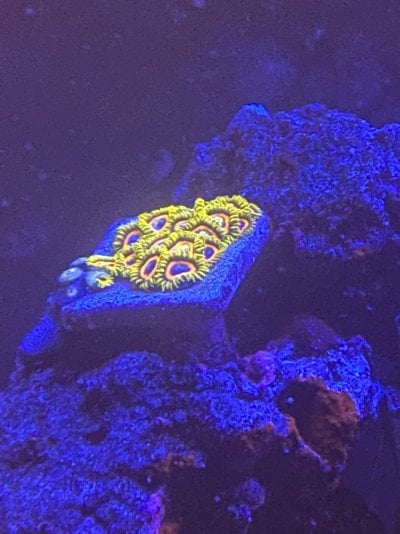- Joined
- Mar 29, 2017
- Messages
- 60
- Reaction score
- 17
Preface:
I had 2 different types of Zoa on a frag shelf, salinity was ~1.021 so very low not enough nutrients theoretically all coral should've died. One of my Zoa's was reproducing rapidly and the other grew an additional polyp so growing but not very quickly.
Nowadays:
Raised salinity to 1.026 (Thank you Fritz RPM and a refractometer), Parameters all look excellent, except for nitrates and phosphates are 0ppm, currently battling cyano in the sand bed and on the rocks but is not growing on or near the Zoas. I moved the Zoas off of the shelf and on a rock I drilled holes in. The Zoa "eat" once daily, they get the mysis "scraps"
The Polyps seem to be growing much larger in size, however, they have not reproduced really at all. Is it because of the low nitrates and phosphate? Dosing would be a natural next step however this is a nano reef and don't want to risk an algae explosion.
I had 2 different types of Zoa on a frag shelf, salinity was ~1.021 so very low not enough nutrients theoretically all coral should've died. One of my Zoa's was reproducing rapidly and the other grew an additional polyp so growing but not very quickly.
Nowadays:
Raised salinity to 1.026 (Thank you Fritz RPM and a refractometer), Parameters all look excellent, except for nitrates and phosphates are 0ppm, currently battling cyano in the sand bed and on the rocks but is not growing on or near the Zoas. I moved the Zoas off of the shelf and on a rock I drilled holes in. The Zoa "eat" once daily, they get the mysis "scraps"
The Polyps seem to be growing much larger in size, however, they have not reproduced really at all. Is it because of the low nitrates and phosphate? Dosing would be a natural next step however this is a nano reef and don't want to risk an algae explosion.















